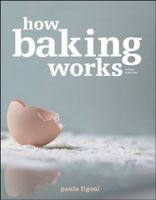Label
All
0
Clear all filters
Questions for Discussion
Appears in
By Paula Figoni
Published 2003
- Assume that two samples of wheat flour contain the same amount of protein, yet one forms more gluten than the other. Provide three explanations for why this could be. Assume that the differences are in the flours and their treatments only and not in the formulas or the methods of preparation for making the dough. Be sure to explain your reasons.
- Assume that a sample of whole wheat flour and one of white flour contain the same amount of protein. Provide three explanations for why less gluten forms from the whole wheat flour than from the white flour. Be sure to explain your reasons.
- Why does bread flour typically contain more broken and fragmented starch granules than pastry flour? How does the extent of this damage affect the flour’s water absorption value and its susceptibility to amylase action? Why is this desirable for bread baking?
- Why does pastry flour typically absorb less water than cake flour? Why is this desirable when making thin, crisp cookies?
- In what way is flour treated with potassium bromate or ascorbic acid similar to naturally aged flour? In what way is it different?
- In what way is flour treated with chlorine similar to naturally aged flour? In what ways is it different?
- How can you tell that the dough you used in baking a batch of bread underwent too little amylase activity? Name four ways that you could increase amylase activity the next time you make bread.
- You have two bread flours available to you. The first is milled from hard spring wheat, is bleached, and has added ascorbic acid and malted barley flour. The other is made from a hard winter wheat, is unbleached, and also has malted barley flour added. First, identify which flour is likely designed for artisan bread. Second, which is the better choice to use in preparing a sweet yeast dough like brioche? Which is the better choice for baguettes? Explain your answers.
- How might a high-ratio cake made with chlorinated cake flour differ from one made with pastry flour? Consider appearance, flavor, texture, and height.
Advertisement
Advertisement
The licensor does not allow printing of this title


